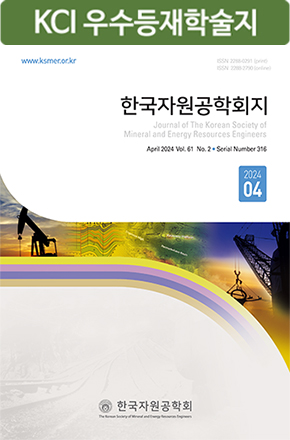Review
- Barton, S.P., Lockley, J., Stroud, D. and Peach, S.R., 2006, “Coupling of Downhole Dynamics Recorder Enhances System-Matched Approach to Drill Bit Design and Application With a Specific Rotary Steerable System,” SPE Annual Technical Conference and Exhibition, Society of Petroleum Engineers, San Antonio, Texas, USA, Sep. 24-27, SPE 102182.
- Choi, W., 1990, “A Study on the Prediction of Hole Trajectory in Oilwell Drilling,” J. of the Korean Society of Mineral and Energy Resources Engineers, Vol. 27, No. 3, pp. 193-200.
- Copercini, P., Soliman, F., Gamal, M.E., Longstreet, W., Rodd, j., Sarssam, M., McCourt, L., Persad, B. and Williams, M., 2004, “Powering Up to Drill Down,” Oilfield Review, Vol. 16, Issues 4, pp. 4-9.
- Downton, G., Hendricks, A., Klausen, T. and Pafitis, D., 2000, “New Directions in Rotary Steerable Drilling,” Oilfield Review, Vol. 12, Issues 1, pp. 18-29.
- Fact Book 2007, 2014.07.11, www.eni.com.
- Kang, J., Choe, J. and Han, K., 1990, “A Numerical Analysis on Deviatin Control of Directional Hole,” J. of the Korean Society of Mineral and Energy Resources Engineers, Vol. 27, No. 4, pp. 290-297.
- Kinn, S., Allen, P. and Slater, M., 2000, “Use of a Rotary Steerable Tool at the Valhall Field, Norway,” IADC/SPE Drilling Conference, Society of Petroleum Engineers, New Orleans, Louisiana, USA, Feb. 23-25, SPE 59217.
- Menand, S., 2012, Latest Advancements in Drillstring Mechanics: BHA & Buckling Modeling, Drillscan.
- Menand, S., Simon, C., Gerbaud, L., Ben Hamida, M., Denoix, H.J., Cuillier, B., Gaombalet, J., Amghar, Y. and Sinardet, H., 2012, “PDC Bit Steerability Modeling and Testing for Push-the-bit and Point-the-bit RSS,” IADC/SPE Drilling Conference and Exhibition, Society of Petroleum Engineers, San Diego, California, USA, Mar. 6-8, SPE 151283.
- Park, B., Kim, J., Park, J., Shin, J. and Myung, H., 2013, “Hybrid 4-Pad Rotary Streerable System for Directional Drilling of Unconventional Resources,” Proc. of the 10th Intrenational Conference on Ubiquitous Robots and Ambient Intelligence, Ubiquitous Robots and Ambient Intelligence, Jeju, Korea, Oct. 31-Nov. 2, pp.659-660.
- Peach, S., 2007, “Rotaty Steerable Systems Prove Value Offshore Indonesia, Offshore Libya, in Gulf of Mexico,” Drilling Contractor, http://www.drillingcontractor.org/dcpi/ dc-marapr07/DC_Mar07_peach.pdf.
- Pratten, C., El Kholy, K., Naganathan, S. and Sharaf, E., 2003, “Rotary Steerable System Applications in the Middle East,” SPE/IADC Middle East Drilling Technology Conference and Exhibition, Society of Petroleum Engineers, Abu Dhabi, U.A.E, Oct. 20-22, SPE 85285.
- Ruszka, J., 2003, “Rotary Steerable Drilling Technology Matures,” Drilling Contractor, http://www.drillingcontractor. org/dcpi/2003/dc-julyaug03/Jully3-Rotary.pdf.
- Shin, C., Lee, S., Kwon, S., Park, D. and Lee, Y., 2012, “A Classification and a Survey on the Core Technology for Shale Gas Development,” J. of the Korean Society for Geosystem Enfineering, Vol. 49, No. 3, pp. 395-410.
- Stroud, D., Russell, M. and Peach, S., 2003, “Development of the Industry’s First Slimhole Point-the-Bit Rotary Steerable System,” SPE Annual Technical Conference and Exhibition, Society of Petroleum Engineers, Denver, Colorado, USA, Oct. 5-8, SPE 84449.
- Publisher :The Korean Society of Mineral and Energy Resources Engineers
- Publisher(Ko) :한국자원공학회
- Journal Title :Journal of the Korean Society of Mineral and Energy Resources Engineers
- Journal Title(Ko) :한국자원공학회지
- Volume : 52
- No :1
- Pages :91-102
- DOI :https://doi.org/10.12972/ksmer.2015.52.1.091



 Journal of the Korean Society of Mineral and Energy Resources Engineers
Journal of the Korean Society of Mineral and Energy Resources Engineers








